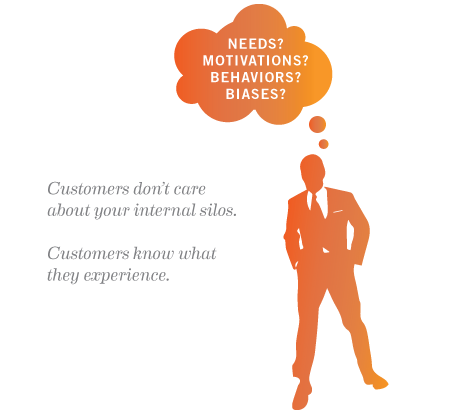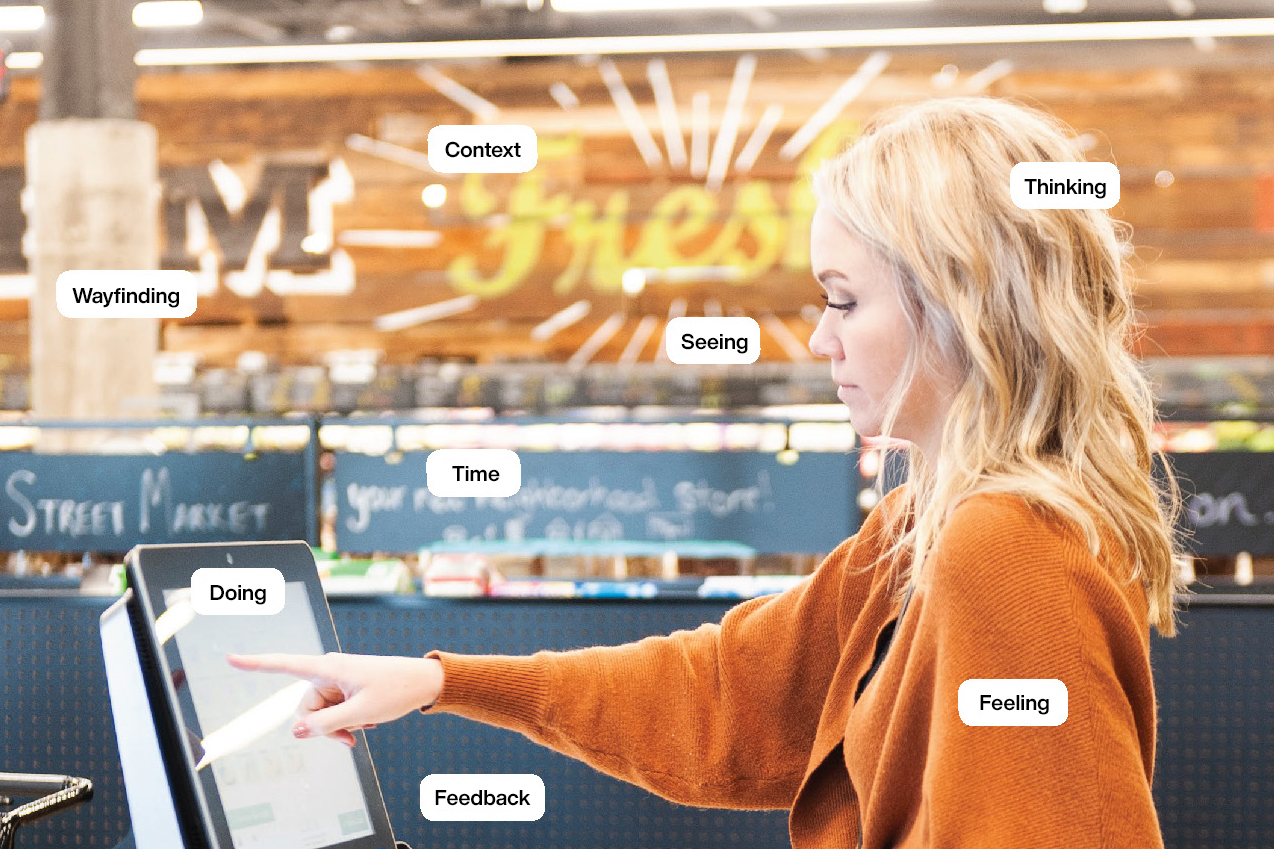Connect with Your Customer
Connect with your customer
Topics
1. Get focused
2. Understand your customer
3. Create holistic experiences
4. Create meaningful expressions
5. Align teams and tools
People are complicated. Quantitative market data have become complicated, too, but it doesn’t tell you what we need to know. You can identify what customers have done, and take an educated guess about what they might do. You can ask them what they like or what they think they will do. This information is helpful. Unfortunately, it won’t tell you enough about why your customers do what they do, what they’ll do next, or really whether they’ll accept your value proposition.
Customer research is critical but it doesn’t have to be painful. The important thing is to better understand the context of their decision making. Too often companies act as if the customer is thinking about their brand or offer from morning to night, which we all know isn’t true. It’s important to understand what customers are really thinking about, and how they make decisions.
Viewing your value proposition through a lens of customer interactions will cause you to reconsider your priorities at a minimum, but may in fact lead you to reconsider your offer. Are you offering the right mix of products and services to meet the needs of your customer? How might you help them to achieve the human need you identified by getting more focused? This is how a tighter focus can lead to more opportunity – new products and services can be added credibly to the mix as you aim for a focused, meaningful target.
Each touchpoint is an interaction, a value exchange with your customer. Each should have an identifiable outcome. In a selling context, it’s moving the sale forward. In purchasing and use, it may be about usability and delight. Each interaction communicates, and is an opportunity to better connect with your customer.
The connection economy requires new skills: A tighter strategic focus based on better understanding of your customers. Expressive personal, physical, and digital customer interactions. Systemic alignment to support a holistic experience. Together, these new competencies will allow companies to build sustainable platforms for connection, differentiation, and innovation.









